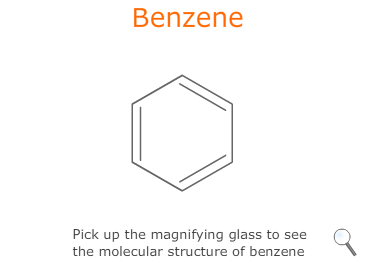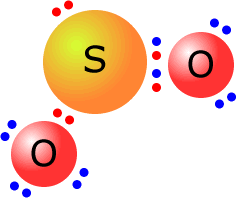Higher-level only
The concept of resonance is used to explain why molecular shapes and bond lengths didn't conform to classical ideas of bonding.
It describes two or more possible structures interchanging so rapidly (resonating) as to be indistinguishable.
Syllabus ref: S2.2.11Structure 2.2.11 - Resonance structures occur when there is more than one possible position for a double bond in a molecule. (HL)
- Deduce resonance structures of molecules and ions.
Guidance
- Include the term “delocalization”.
Tools and links
- Structure 1.3 - Why are oxygen and ozone dissociated by different wavelengths of light?

Background
Lewis structures give us a model of where the electron pairs are in the valence shell of atoms and molecules. Thevalence shell electron pair repulsion theory then extends our ability to explain and predict the shapes of molecules. However, there are limitations to the VSEPR theory, such as the bond lengths and angles in certain molecules.
 For
example, sulfur dioxide (sulfur(IV) oxide) can be represented by the following
Lewis structure.
For
example, sulfur dioxide (sulfur(IV) oxide) can be represented by the following
Lewis structure.
The structure shows the two oxygen atoms to be attached to the sulfur atom by different types of bond. The atom on the right is bonded by two pairs of electrons. It is a double bond. The oxygen atom to the left is only bonded by one electron pair (shown as a dative coordinate bond)
We know that double bonds are shorter and stronger than single bonds therefore we would expect that the sulfur dioxide molecule has two different bond lengths:
However, bond length measurements find that both of the sulfur - oxygen bonds are the same length. It is clear that the theories of Lewis structures and Hybridization need a little modification to explain the bond lengths.
The first modification was the theory of resonance.
Resonance
Resonance suggests that whenever there is more than one possible way to draw a Lewis structure, all of the possibilities are correct and that the molecule oscillates (resonates) rapidly between the structures.
In the case of sulfur dioxide the double bond could be draw between either oxygen and the sulfur atom without affecting the structure.
1. Carbonate
The carbonate ion, CO32-, in common with most polyatomic ions can be drawn using several resonance forms.
A general rule is that the more resonance forms that you can draw the more stable is the structure.
2. Ozone
Ozone is an allotrope of oxygen. It is a reactive toxic gas and a health hazard pollutant when formed near the surface of the earth, but it is a very important ultraviolet light shield when it is in the upper atmosphere.
The structure can be drawn using two Lewis arrangements of electrons. These two structures can be considered interchangable by resonance.
3. Carboxylate ion
Carboxylic acids are acidic partally due to the stability of the carboxylate ion formed by loss of a hydrogen ion in solution. The carboxylate ion has two resonance forms, which accounts for this extra stability compared to the molecular form of the acid.
4. Benzene
Benzene, C6H6, can be drawn in two forms, called Kekule forms. These can be considered to interchange by resonance.